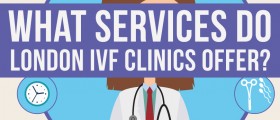
One way of limiting the potential for left-over embryos is to transfer as many as possible to your uterus (or the uterus of your surrogate mother). While this may reduce the number of left-over embryos or even eliminate the problem altogether, implanting many embryos at once does create its own set of concerns. No more than four embryos should be implanted during a cycle. When you do find yourself in the situation that you have more IVF embryos than the number that could be implanted, you have the option of freezing them for use at a later date.
Through frozen embryo transfer (FET), previously created embryos can be used years later. If you decide on this, there might be limitations on the number of years you can store your frozen embryos usually five to ten years is permitted by regulations. You can also decide to have your left-over embryos destroyed, or donate them for scientific research. These are options that give rise to ethical dilemmas for many couples, and they are not suitable for everyone.
A third option, if you decide not to hold onto your embryos for whatever reason, is embryo adoption. This means that another couple will be adopting your embryo or embryos, either through an embryo adoption agency or your fertility clinic.





_f_280x120.jpg)










Your thoughts on this
Loading...